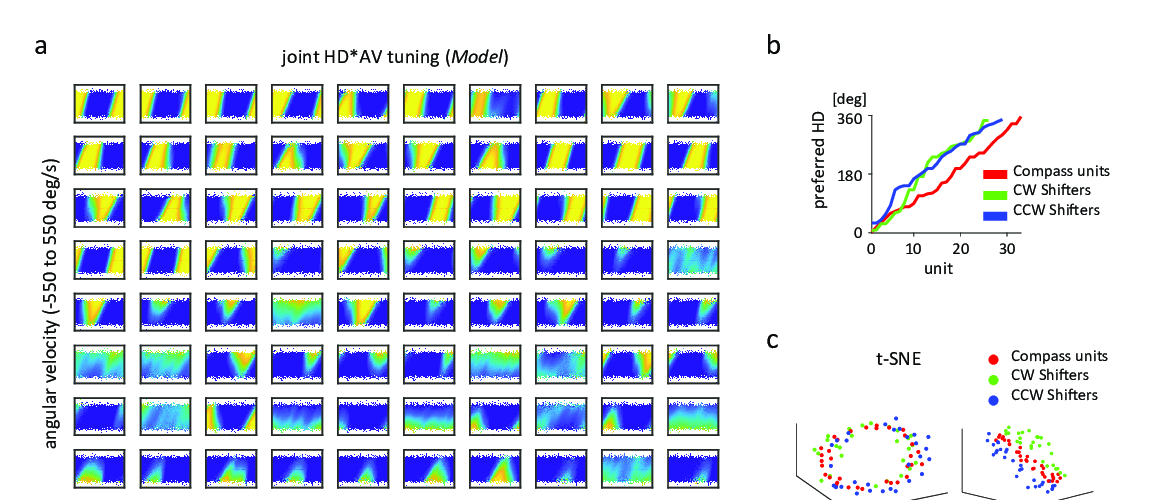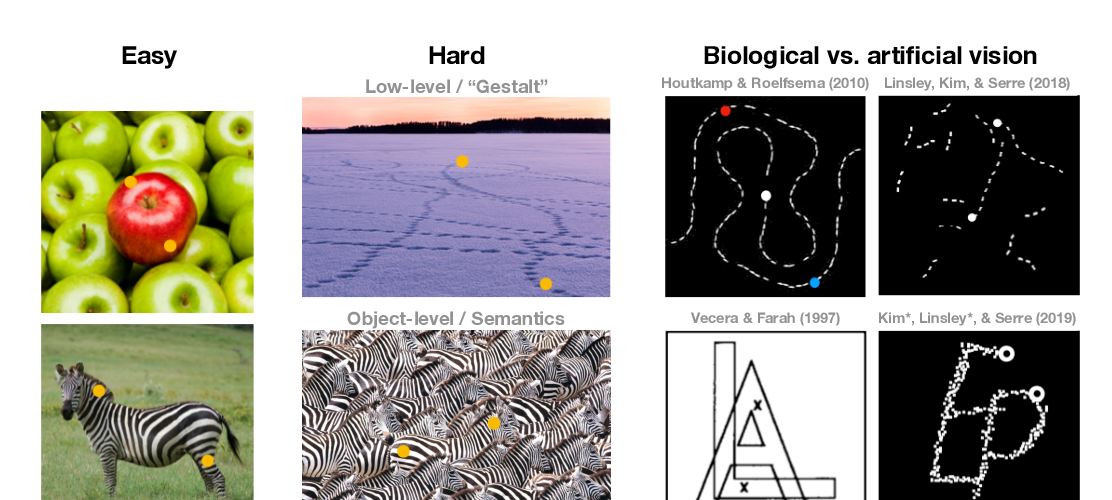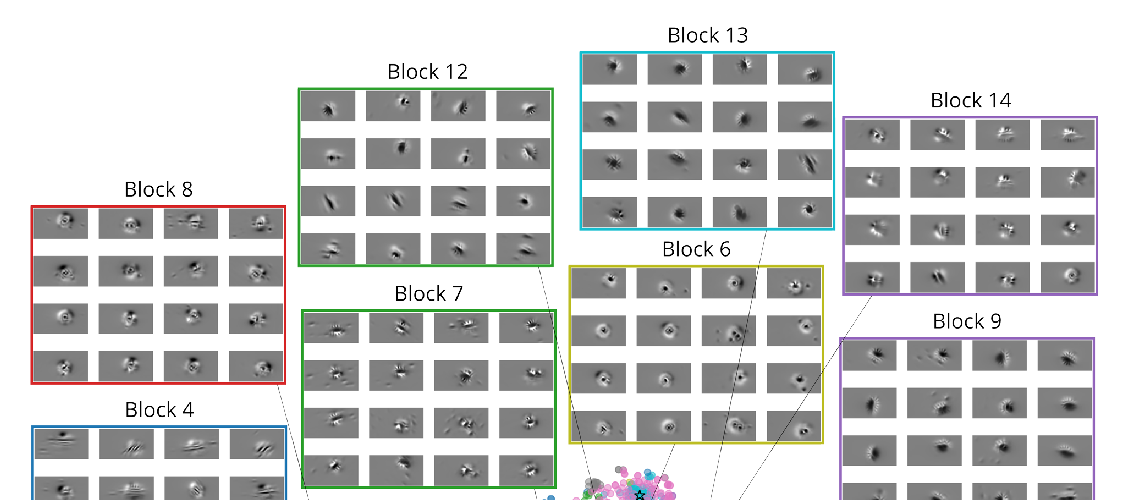Abstract:
We introduce a deep recurrent neural network architecture that approximates visual cortical circuits (Mély et al., 2018). We show that this architecture, which we refer to as the 𝜸-net, learns to solve contour detection tasks with better sample efficiency than state-of-the-art feedforward networks, while also exhibiting a classic perceptual illusion, known as the orientation-tilt illusion. Correcting this illusion significantly reduces \gnetw contour detection accuracy by driving it to prefer low-level edges over high-level object boundary contours. Overall, our study suggests that the orientation-tilt illusion is a byproduct of neural circuits that help biological visual systems achieve robust and efficient contour detection, and that incorporating these circuits in artificial neural networks can improve computer vision.


